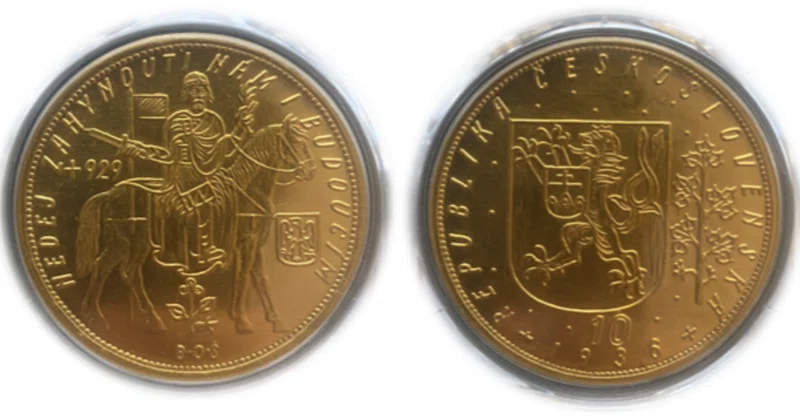Large Gold Coins Popular Among Wealthy Western Collectors: "Czechoslovakia 10 Ducat Gold Coin 1"

In recent years, large gold coins have become increasingly popular among wealthy collectors in the West. Antique coins are physical assets that tend to retain their value even when currency values drop or financial crises occur, making them an excellent choice for wealth preservation.
One such popular large gold coin is the Czechoslovakian 10 Ducat gold coin. This coin is particularly valuable due to the fact that Czechoslovakia no longer exists as a country (having split into the Czech Republic and Slovakia), and the coin was minted in limited quantities, leading to a significant increase in its value.
In this article, we’ll explore the 10 Ducat gold coin, commonly known as the 'Saint Wenceslas on Horseback,' as well as provide some background on Saint Wenceslas himself. We hope this article will serve as a useful reference for your antique coin collection.
Basic Information on the Czechoslovakian 10 Ducat Gold Coin: Saint Wenceslas on Horseback
Let’s review the basic information about the 10 Ducat gold coin issued in Czechoslovakia, known as 'Saint Wenceslas on Horseback':
- Country: Czechoslovakia
- Year of Issue: 1929–1938, 1951 (the coin discussed here was issued in 1936)
- Mintage: 633 coins in 1936
- Material: Gold
- Diameter: Approximately 42mm
- Weight: Approximately 35g
- Obverse: Saint Wenceslas on horseback
- Reverse: A lion representing the Czech lands and a shield representing Slovakia
The 'Saint Wenceslas on Horseback' coin is a large gold coin with a diameter exceeding 4 centimeters, making it a highly sought-after piece among collectors. In addition to its rarity as an antique coin, the coin’s gold content makes it a stable investment, which is why large gold coins are particularly popular for wealth preservation.
Due to its limited mintage and high rarity, the 'Saint Wenceslas on Horseback' coin can fetch prices of over $35,000 in the market. The 1936 issue, with only 633 coins minted, is especially rare. To put this in perspective, even the 1933 issue, with 1,780 coins minted, is considered quite rare, highlighting just how limited the 1936 mintage is.
Who Was Saint Wenceslas?
Saint Wenceslas is the patron saint of the Czech Republic and was Duke of Bohemia from 921 to 935. Bohemia encompasses what is now the Czech Republic, including Prague.
Wenceslas I was a key figure in the Christianization of Bohemia. He initiated the construction of the church that would eventually become St. Vitus Cathedral and invited missionaries from Germany as part of his efforts to promote Christianity.
Additionally, he recognized the suzerainty of the East Frankish Kingdom, aligning Bohemia with Western Europe and easing military pressures from the West. Through the support of Western Christian missionaries, Wenceslas established a strong governance structure underpinned by royal authority and Christianity.
However, not everyone agreed with his political strategies, leading to a coup. The coup was led by Wenceslas’ brother, Boleslaus, who ultimately assassinated Wenceslas I.
In the next installment, we’ll explore the history of Czechoslovakia.
May your antique coin journey bring you good fortune!
